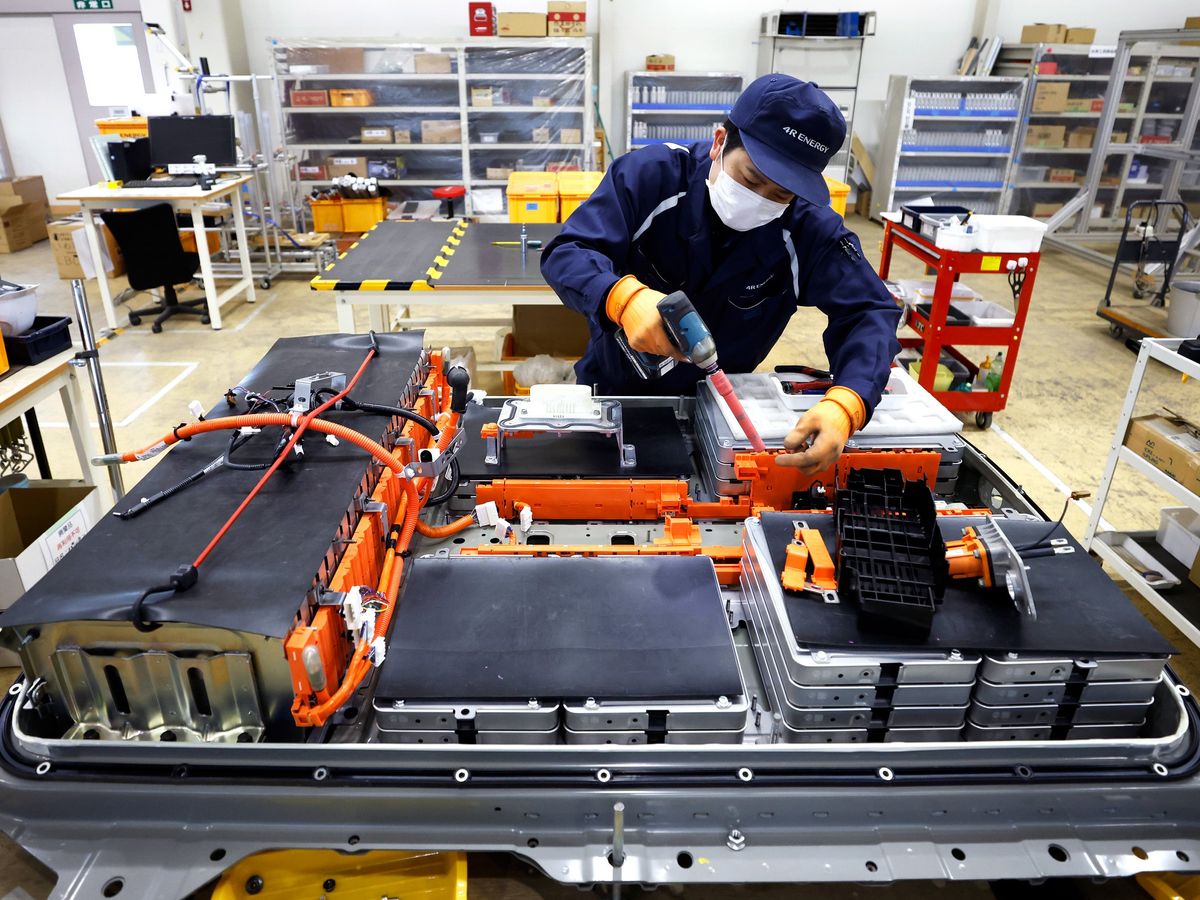As cars, trucks, and buses (and even airplanes and trains) increasingly switch from burning fossil fuels to running on batteries, the demand for critical battery metals is starting to skyrocket. Electric vehicle sales are expected to double between 2023 and 2027, triggering a shortage of lithium by 2024, and of nickel and cobalt—two key ingredients of today’s lithium-battery cathodes—by 2027, according to a recent report by market intelligence firm S&P Global.
Researchers are trying to make cathodes that use less of these critical metals or replace them altogether. One team believes they might have found just the right material: disordered rock salt (DRX), a cousin of table salt. The DRX Consortium, led by Lawrence Berkeley National Laboratory (Berkeley Lab), is now racing to commercialize the promising new cathode contender, with a plan to demonstrate a DRX cathode for EV batteries in less than five years.
DRX cathodes could lead to lithium-ion batteries with significantly more energy per weight than would be possible today, which would give vehicles longer driving ranges. And these cathodes could offer this energy-density advantage without cobalt and nickel. Some of the DRX Consortium’s earliest formulations are made with manganese or titanium, which are both cheaper than nickel and cobalt.
“You can use a lot of different transition metals,” says Guoying Chen, a research scientist at Berkeley Lab who is coleading the consortium along with University of California, Berkeley materials science and engineering professor Gerbrand Ceder. “Elements that are lot more abundant and we have easy access to. All these years, traditional lithium-ion cathode materials have relied on nickel and cobalt, but now all of a sudden we have a versatile, flexible space. Sustainability is really a big advantage.”
High-density cathodes used in today’s batteries are made of lithium metal oxides. They have a crystal structure composed of repeated layers of lithium alternating with cobalt, nickel, and other metals. Lithium ions easily slip into and out of the gaps between the layers, and cobalt ions act like supportive pillars that make the structure stable. “If you don’t use something like cobalt, the layered structure is less stable as you charge and discharge these materials,” Chen says. This is why fully removing cobalt has been a challenge, even though several research projects are underway to make cobalt-free cathodes.
“All these years, traditional lithium-ion cathode materials have relied on nickel and cobalt, but now all of a sudden we have a versatile, flexible space.” —Guoying Chen, research scientist, Berkeley Lab
But of all the battery metals, cobalt is an especially thorny one. More than half the world’s cobalt comes from the Democratic Republic of the Congo, where mining practices have brought up concerns of environmental and human-rights issues. Using better ways to find cobalt and other battery metals in new regions of the world is one solution. Mining from the oceans is another, but it dredges up its own issues.
DRX materials do not require cobalt for stability because they have a crystal structure that is cubic rather than layered. Lithium ions percolate through the material in three dimensions rather than in two, as they do in traditional layered cathode materials. This means DRX cathodes can “get stuffed with more lithium ions, which is why they offer more energy density,” says Chen. “We call this a lithium-excess cathode material.”
First reported in 2014 by Ceder and his colleagues, DRX materials showed enough promise for lithium-ion storage in computational studies that the researchers undertook a four-year in-depth research study on the materials. The team then launched the DRX Consortium in October 2022 with US $20 million in funding from the U.S. Department of Energy Vehicle Technologies Office.
The consortium is spread out across various DOE national laboratories and universities. Different teams are working on computational modeling to come up with new and improved chemical compositions for DRX cathodes; making the materials and experimentally testing them to characterize and improve them; and developing new electrolytes that work best with the DRX cathodes in a battery.
Chen says the biggest challenge the researchers will have to surmount is to make stable materials that can last for thousands of charge cycles. “Our materials have showed good performance, but one main thing we’re working on is to improve battery-cycle life with DRX materials in it. You want these materials to last for a long time in an EV battery.”
- For Cheaper Lithium-Ion Batteries, Just Add Salt ›
- Who Really Invented the Rechargeable Lithium-Ion Battery? ›
- Can Electronics Become Compostable? - IEEE Spectrum ›
Prachi Patel is a freelance journalist based in Pittsburgh. She writes about energy, biotechnology, materials science, nanotechnology, and computing.



